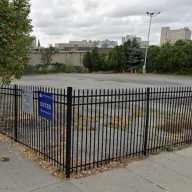Despite the city comptroller’s call for the State Department of Health (DOH) to reconsider or delay the closures of Mary Immaculate and St. John’s Queens hospitals, it seems as though the shuttering is proceeding. On Tuesday, February 17, State DOH Commissioner Richard F. Daines, M.D. announced $18 million in grants to other facilities to ensure continuity of health care and to help in job placement.
The grants include $14.5 million to expand capacity at eight different health care facilities including:
- _ $3.6 million to Health and Hospitals Corporation of New York City (HHC) to expand inpatient capacity and emergency room services at its Elmhurst and Queens Hospital Centers;
- _ $4.5 million to Medisys to expand inpatient capacity and emergency room services at its Jamaica and Flushing sites;
- _ $3.5 million to North Shore-LIJ to expand inpatient capacity and emergency room services at its Forest Hills and Franklin sites;
- _ $2.7 million to Wyckoff Medical Center to expand inpatient and emergency room services;
- _ $650,000 to the Joseph P. Addabbo Family Health Centers to maintain primary and preventative services at the St. Dominic’s Health Care Center.
“These grants will help other health care facilities in the area expand their capacity to absorb the patients previously handled by these two Caritas hospitals and assist workers in finding new employment,” said Daines.
In addition, monies will be allocated for the extension of a State DOH contract with union 1199 SEIU for the Displaced Workers Program that will make up to $3 million available for job counseling, placement, and workforce retraining for employees being displaced because of the two hospital closings.
As of midnight, Friday, February 13, the two hospitals were on diversion, meaning that no patients were being taken into the emergency department and ambulances were required to divert patients to an alternate hospital facility. The DOH has given approval to the plan to close the hospital by February 28. The agency said it has staff on site on a daily basis at both “to monitor the access and availability of services and ensure an orderly closure of the two facilities over the next several weeks.”
“It’s a death waiting to happen,” said Kim Zambrotta, long-time RN and delegate specializing in critical care at St. John’s.
She suddenly found herself without a job late last week when her department was shut down.
“The majority of the staff is gone. This is a disgrace,” she said.
Among the other departments closed, she said, were the main emergency room, the coronary care unit, pediatrics, GI lab, special procedures and two medical/surgical units.
“How appropriate,” she said, “that on Valentine’s Day, they closed the coronary unit.”
Patients, too, are being sent home or to other facilities, according to Zambrotta.
“People in the ICU that just had neurosurgery were moved,” she said.
In an earlier letter to Daines, New York City Comptroller William C. Thompson wrote, “DOH has not publicly disclosed its plans to address the consequences of these closures. DOH has also failed to address concerns, including how nearby emergency rooms such as the one at Jamaica Hospital will be able to absorb an expected 50 percent increase in demand.”
Thompson also charged that the DOH made little effort to engage the community and stakeholders in its closure plans, despite knowing that the hospitals were in financial trouble. He expressed concerns regarding patient notifications and coordination with providers to ensure the continuity of care for outpatients, and questioned how remaining hospitals will absorb the financial impact of increased patient loads.
“There are a lot of injustices here,” said Zambrotta, who told The Courier that up until January, employees only knew that Caritas, which operates the two health care facilities, was in financial difficulty. “We didn’t know it was this bad.”
Caritas filed Chapter 11 bankruptcy on February 6. Currently, officials are still in bankruptcy court, according to a spokesperson, Craig Horowitz.
According to the web site for 1199 SEIU, that represents about 1,600 employees at both hospitals, “Closing both hospitals would create a minimum bed shortage of 216 in an average period. Worse yet, during peak periods, this shortage could jump to as high as 481 beds.”
The web site also notes that “St. John’s and Mary Immaculate provide health care services to a disproportionately large patient population on public insurance and the uninsured – increasing their share of Medicaid patients at a faster and higher rate than other hospitals in the borough as well as treating a higher than average share of uninsured patients.”
“This is Queens – there’s a lot of diversity, a lot of immigrants – people don’t stand up for their rights,” said Zambrotta.
And, with the economic downturn, Thompson said, “As increasing numbers of city residents lose their jobs and health insurance, there will be significant demands on emergency rooms as city residents’ access to primary care decreases. With capacity already strained, crowded emergency rooms mean longer wait times for patients, delayed ambulance response times, and possibly, diminished health outcomes.”
Leah Gonzales, spokesperson for 1199, said that they are in talks with Caritas “to ensure protection for our workers through our job security fund, a standard practice.”
She continued, “It was unfortunate they [Caritas] were never able to restructure, but we have been supporting workers’ and the community’s efforts to save the hospitals and keep them open because we have always believed they are incredibly important to the communities.”
“I took this oath to serve people who are sick,” lamented Zambrotta, who told The Courier that she does not have an up-to-date resume ready. “It makes me wonder – why close so fast?”






























